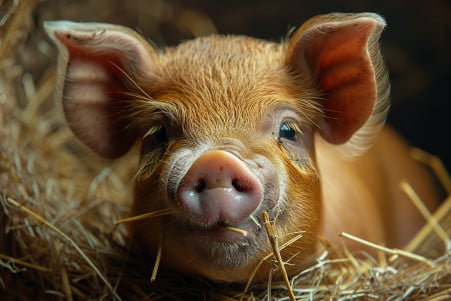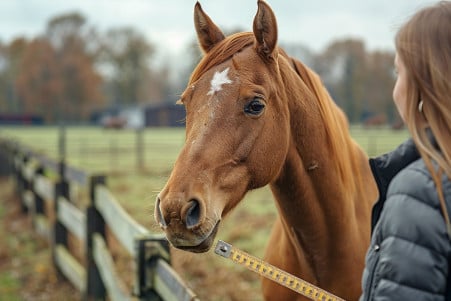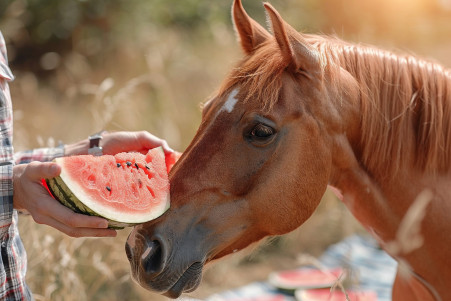How Many Flakes Are in a Bale of Hay? What It Means for Animal Nutrition
15 April 2024 • Updated 14 April 2024

Because hay is a primary source of nutrition for many farm animals, knowing how many flakes are in a bale and what they're made of can be important for farmers and animal owners. A small square bale of hay will have between 14 and 20 individual flakes or slices, while a large round bale will have 80 to 100 flakes that are densely packed together. The exact number of flakes in a bale depends on the type of hay, the moisture level, and the method used to bale it.
This article will explore the findings of agricultural researchers and hayfield surveys to explain the factors that determine how many flakes are in a bale. This information will help you make the most of your hay storage and feeding plans and give you an idea of the overall quality and nutritional value of the hay you have on hand. Knowing how many flakes are in a bale of hay will help you make sure your animals are getting the nutrition they need while using your resources efficiently.
How many flakes are in a bale of hay?
Flake Fundamentals: What's Inside a Flake of Hay?
The creation of individual flakes in a bale of hay starts with the baling process. According to Calliope Wholesale Hay & Feeds, a baler presses and ties the cut hay into a bale, creating the flakes as distinct layers or slices. The number of flakes in a bale depends on its size and shape, with small rectangular bales typically containing 14-20 flakes, and larger round bales holding 80-100 flakes.
The weight of the flakes, however, is not consistent. For example, as Horse Lover's Math notes, a 50 lb bale of Pacific Northwest hay with 12 flakes will have flakes that weigh about 4 lbs each, while a 110 lb bale with 16 flakes will have flakes that weigh almost 7 lbs each. This is due to differences in the type of hay, the region it comes from, and the moisture content when it was baled.
Knowing this information is important because it helps you calculate the nutritional content of your animals' feed more accurately. For example, Star Milling Co. compares a 90 lb Bermuda hay bale to a 115 lb bale, both with 16 flakes. The flakes in the 90 lb bale will weigh 5.6 lbs, while the flakes in the 115 lb bale will weigh 7.2 lbs. With such a difference in weight, even within the same type of hay, counting flakes to determine how much to feed your animals can result in overfeeding or underfeeding. Knowing the weight of the flakes in a bale of hay will help you feed your animals based on their weight and their specific nutritional needs.
How to Calculate Hay Needs: A Weight-Based Method
Knowing how much hay to feed your horse is important for their health and well-being. The University of Minnesota Extension says that horses should be fed a minimum of 1% of their body weight in forage (like hay) daily, with most horses doing well on 2% of their body weight.
For a quick reference, Kentucky Equine Research has provided the expected forage intake for different types of horses:
| Type of Horse | Forage as % of Body Weight | Forage as % of Diet |
|---|---|---|
| Maintenance | 1.0-2.0% | 50-100% |
| Pregnant Mare | 1.0-2.0% | 50-85% |
| Lactating Mare (early) | 1.0-2.5% | 33-85% |
| Lactating Mare (late) | 1.0-2.0% | 20-60% |
| Weanling | 0.5-1.8% | 30-65% |
| Yearling | 1.0-2.5% | 33-80% |
| Performance Horse | 1.0-2.0% | 33-80% |
However, as The Spruce Pets points out, these are general recommendations and individual horses' needs can vary based on factors like age, metabolism, and exercise. The quality of the hay also matters, since, as Lucerne Farms says, higher-quality forage will be more nutritionally dense than lower-quality hay. In the end, a combination of hay and supplements may be necessary to make sure your horse is getting everything they need.
How to Spot High-Quality Hay for the Best Nutrition
High-quality hay is important for a horse's health and well-being. According to The Hay Manager, horses will often refuse to eat low-quality hay, and even if they do, it's not very nutritious. Moldy or dusty hay can also be dangerous to a horse, potentially leading to hay-induced colic.
When it comes to hay, the American Association of Equine Practitioners says to look for fine-stemmed, green and leafy hay that feels soft. On the other hand, you should avoid hay that's overcured, sun-bleached, or has a musty, moldy, or fermented smell. Purina Animal Nutrition also says to consider the leaf-to-stem ratio, stem diameter, and presence of seed heads or blooms, which are all signs of maturity and quality.
Legume hays like alfalfa are higher in protein, energy, calcium, and vitamin A than grass hays. However, according to Oklahoma State University, you can't rely on sight alone to determine hay quality - hay analysis is necessary to know the exact nutrient content. In addition, proper storage in a dry, well-ventilated space can help maintain hay quality. This is especially important if you're storing hay for a long period of time, according to Tribute Equine Nutrition.
By knowing what to look for in high-quality hay and using hay analysis, you can make sure your horses get the best nutrition possible.
Smooth Transitions: How to Change Hay Sources Safely
When changing hay sources or types, it's important to transition your horse slowly to avoid digestive upset. According to Tribute Equine Nutrition, any change in a horse's diet should be made over a 2- to 4-week period. In fact, research has shown that a change in hay over 7 days results in a 20x increase in the likelihood of colic, while a change over 3-4 weeks only results in a 2x increase.
This is because the horse's gut microbiome needs time to adjust to the new nutrients. OnCourse Equine Nutrition notes that both increasing and decreasing fiber can disrupt the normal flow of fiber and water through the gut, so it's important to make these changes gradually. In addition, supplementing with a prebiotic and probiotic, such as Equi-Ferm XL, can help support the microbiome as it adjusts to the new feed.
To change hay safely, The Horse suggests starting with a 25% new to 75% old hay ratio and then increasing the new hay over a 7- to 14-day period. It's important to monitor your horse's manure, behavior, and water consumption throughout this time. By making the effort to transition your horse gradually, you can help ensure that they don't experience digestive upset and that they continue to thrive.
Conclusion: Making the Most of Your Hay Supply
Knowing the composition and structure of hay bales is important for making the most of livestock management and feed storage. From the number of flakes in a bale to the range of flake weights, this information enables farmers and animal owners to accurately portion hay, choose the best forage, and safely switch between different sources of hay.
By using the information in this article, you can make sure your animals are getting the nutrition they need while avoiding waste and getting the most out of your hay supply. In the end, this knowledge of hay bale anatomy and the best ways to store hay will help ensure the health and success of your livestock.


